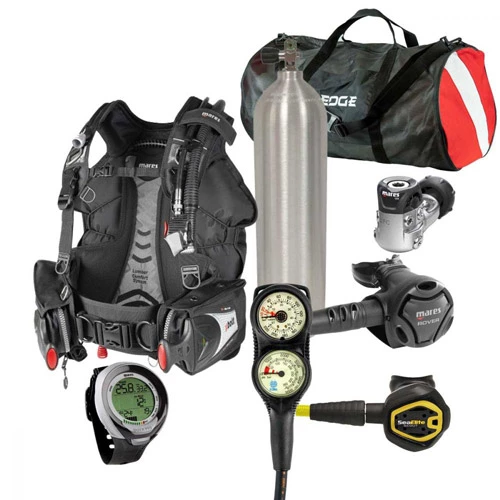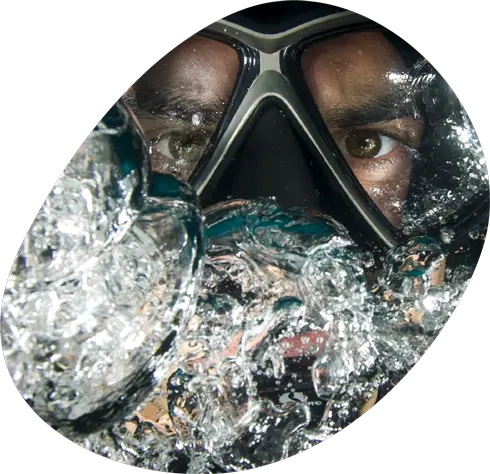What is a cave diving accident?
A cave diving accident refers to an incident or mishap that occurs while diving in an underwater cave system. Cave diving is a specialized form of diving that involves exploring submerged caves, often characterized by narrow passages, low visibility, and intricate underwater formations. These unique environments present additional risks and challenges compared to open-water diving.
Cave diving accidents can happen due to various factors, including equipment failure, inadequate training, poor visibility, navigation errors, or a lack of proper planning and preparation. Some common cave diving accidents include:
- Entanglement: Divers can get entangled in cave formations, such as tight crevices or lines, which may impede their movement or cause panic.
- Equipment Failure: Malfunctioning or inadequate equipment, such as a regulator or dive light failure, can lead to dangerous situations and potential accidents.
- Gas Management Issues: Running out of breathing gas or exceeding the no-decompression limits due to poor gas management can result in decompression sickness or other related complications.
- Lost or Disoriented: Cave systems can be intricate and maze-like, causing divers to become disoriented or lose their way, leading to a potentially dangerous situation.
- Silt-out or Zero Visibility: Disturbing sediment or silt in a cave can reduce visibility to zero, making it challenging for divers to navigate and find their way out safely.
- Panic or Anxiety: The unique environment of cave diving, including tight spaces and limited exits, can induce panic or anxiety in divers, potentially leading to accidents.
Cave diving accidents can have severe consequences due to the challenging nature of the environment and limited access for rescue operations. It is crucial for cave divers to have specialized training, experience, and proper equipment. Additionally, thorough planning, adherence to safety protocols, and diving with a qualified buddy are essential to minimize the risks associated with cave diving accidents.
It is important to note that cave diving is an advanced form of diving and should only be undertaken by individuals with the appropriate training, experience, and certification. Seeking guidance from cave diving experts and instructors is vital to ensure safety and minimize the potential for accidents in this demanding and specialized diving environment.
Latest diving accidents
Best Practices for Safety
Diving is a thrilling and awe-inspiring activity that allows us to explore the mesmerizing underwater world. However, like any adventure sport, diving comes with its own set of risks. Diving accidents can occur due to a variety of factors, ranging from equipment malfunctions to human error.
Understanding the Risks
Before embarking on any cave diving expedition, it is crucial to have a comprehensive understanding of the risks involved. Divers must be aware of potential hazards such as limited visibility, entanglement risks, strong currents, and sudden changes in water conditions. By being well-informed about these dangers, divers can prepare adequately and make informed decisions during their dives.
The Importance of Proper Training and Certification
Diving is not something to be taken lightly, and obtaining proper training and certification is crucial. Certified instructors teach aspiring divers the necessary skills and knowledge to navigate underwater safely. Training programs cover topics such as equipment usage, dive planning, and emergency procedures. By enrolling in a reputable dive school and obtaining certification, divers can minimize the risks associated with diving accidents.
Maintaining and Inspecting Diving Equipment Regularly
Diving equipment plays a vital role in ensuring safety during dives. Regulators, dive computers, buoyancy control devices (BCDs), and tanks must be in optimal condition before each dive. Regular inspections by professionals help identify any potential issues, such as leaks or faulty parts, which could lead to accidents underwater. By meticulously maintaining and inspecting diving equipment, divers can minimize the risk of equipment-related accidents.


Proper Dive Planning and Risk Assessment
One of the essential aspects of safe diving is thorough dive planning and risk assessment. Divers should consider factors such as dive site conditions, weather, depth, and the presence of any hazards. Conducting pre-dive briefings, discussing emergency procedures, and establishing dive signals among the diving group are crucial steps in preventing accidents. By taking the time to plan dives carefully and assess associated risks, divers can enhance their safety underwater.
Buddy System: Diving Together, Staying Safe Together
The buddy system is a fundamental practice in diving that emphasizes the importance of diving with a partner. Having a buddy provides an additional layer of safety and support during dives. Buddies can assist each other in case of emergencies, share air supply if needed, and serve as an extra set of eyes to spot potential dangers. Always ensure effective communication with your buddy and never dive alone to reduce the risks of accidents.
Monitoring and Managing Air Supply
Proper management of air supply is critical for safe diving. Monitoring the air gauge regularly and planning dives within no-decompression limits help prevent incidents like running out of air or experiencing decompression sickness. Divers should also establish hand signals or other forms of communication to convey their remaining air supply to their buddy. By keeping a close eye on air consumption and managing it effectively, divers can minimize the chances of accidents related to inadequate air supply.
Diving Within Limits: Depth and Decompression
Diving within the limits of one's training and experience is essential for safety. Depth and decompression limits should always be respected to avoid the risks associated with nitrogen buildup in the body. Going beyond the recommended depth or failing to follow proper decompression procedures can lead to decompression sickness, a potentially life-threatening condition. By adhering to depth and decompression limits, divers can mitigate the risks associated with overexertion and decompression sickness.
Respect for Limits and Personal Boundaries
Understanding one's limitations and setting personal boundaries is a critical aspect of preparation. Divers must be honest with themselves about their abilities and comfort levels. Pushing beyond these limits without the necessary skills or experience can lead to accidents. Gradual progression, self-awareness, and respecting the advice of experienced cave divers contribute to a safer and more enjoyable diving experience.
Diving accidents can have severe consequences, but by implementing the lessons learned from past incidents and following best practices, divers can significantly reduce the risks involved. Proper training and certification, regular equipment maintenance, thorough dive planning, diving with a buddy, monitoring air supply, staying within depth and decompression limits, maintaining physical fitness, and being prepared for emergencies are key elements in ensuring a safe diving experience.

